The spine also called the backbone, is made up of vertebral bones with cushioning intervertebral discs between them. The spine is designed to give us stability and smooth movement, as well as providing a corridor of protection for the delicate spinal cord. It is supported by muscles, tendons, and ligaments, and innervated by nerves that branch out from the centrally placed spinal cord.
Having a well-functioning healthy back is essential for our mobility and ability to participate in various activities. Understanding the anatomy of the spine enhances your ability to discuss conditions of the spine and treatment options with your doctor.
Vertebra: The spine is made up of bony segments called vertebrae, and fibrous tissue called intervertebral discs. The vertebrae and discs form a column from your head to your pelvis providing symmetry and movement to the body.
This spinal column is made up of approximately 33 vertebral bones stacked one on top of the other from the base of the skull to the pelvis. Twenty-four of these vertebrae articulate with each other, while the last nine are fused together. Each vertebra is made up of several parts:
Vertebral Body: This is the main part of the vertebra. It supports most of the load while standing and provides a platform for the attachment of the intervertebral discs.
Pedicles: These are two cylinder-shaped projections originating from the back of the vertebral body, connecting the front and back of the vertebra.
Lamina: Lamina is a pair of flat arched bones that form the roof of the spinal canal and provide support and protection to the spinal cord at the back.
Spinous Processes: These are the bony projections that arise at right angles to the midline of the lamina. These projections can be felt when touching the back.
Transverse Processes: These are bony protrusions located at the junction of the pedicle and lamina. They provide a place for the attachment of the back muscles.
Spinal Canal: This is the tunnel formed at the center of the vertebra for the passage of the spinal cord.
Facet Joints: These are paired articular processes found at the vertebral arch. Each vertebra consists of two pairs of facet joints; one pair called superior facets articulates with the vertebra above and the other pair, inferior facets articulates with the vertebra below.
Intervertebral Discs: The intervertebral discs are flat, rounded soft tissue structures situated between two vertebral bodies of the spine. The discs are composed of a tough, fibrous outer ring called the annulus fibrous and a soft, inner core called the nucleus pulposus. Intervertebral discs function as shock absorbers for the spine. Aging and injury can cause degeneration of these discs and cause painful rubbing of the vertebral bones.
Vertebral Column: The vertebrae are arranged one on top of the other to form the spine. The spine is categorized into 5 spinal segments: cervical, thoracic, lumbar, sacral, and coccyx.
- Cervical: The cervical spine is called the neck. It begins at the base of the skull and is comprised of seven vertebrae numbered C1 to C7. The neck supports the weight of the head and allows the greatest range of motion due to two specially shaped vertebrae, the ring-shaped atlas and the peg-shaped axis, which are the first two vertebrae.
- Thoracic: The thoracic spine is made up of twelve thoracic vertebrae, which are numbered T1 to T12. They start from the upper chest and extend to the middle back, communicating with the ribs in the front of the chest to protect the heart and lungs.
- Lumbar: The Lumbar spine is made up of five lumbar vertebras numbered L1 to L5. These are situated in the lower back region and are larger in size. The major function of the lumbar vertebrae is to carry the weight of the body and absorb the stress of lifting and carrying heavy objects.
- Sacrum: The sacrum is a single bone, formed by the fusion of five sacral vertebras together. It connects the spine to the hip bones.
- Coccyx: Also called the tailbone, the coccyx is formed from the fusion of four bones and provides attachment for muscles and ligaments to the pelvic floor.
Spinal Curves: The side view of an adult spine resembles a natural S-shaped curve. The curves provide strength and support to the spine, maintain balance, and absorb shock. Any abnormality in the spinal alignment is called a spinal deformity.
Muscles: The most important spinal muscles include the extensors, flexors, and oblique muscles, which work to stabilize the spine and allow the spine to move. Any weakness or strain in the back muscles can cause incredible strain on the spine.
- The extensor muscles are attached to the back of the spine and help us to stand and lift objects.
- The flexor muscles originate from the front of the spine and include the muscles of the abdomen. These help in the forward movement and lifting and control the arch of the lower back.
- The oblique muscles are found at the sides of the body and help in the side-ways rotation of the back.
Ligaments: Spinal ligaments are strong fibrous bands that stabilize and hold the vertebrae in place. The major ligaments are the ligamentum flavum, anterior longitudinal ligament, and posterior longitudinal ligament. The anterior and posterior longitudinal ligaments are continuous bands that run from the top to the bottom of the spinal column along with the vertebral bodies, and the ligamentum flavum attaches one lamina to the other. These ligaments function to maintain the alignment of the vertebrae.
Spinal Cord: The spinal cord originates from the brain and extends through the base of the skull to the lower back through the spinal canal. It is covered by three membranes called meninges. Spaces between these membranes are filled with cerebrospinal fluid.
There are 31 pairs of spinal nerves that originate from the spinal cord. These nerves carry all the information from the body to the brain, controlling sensation and movement.
Any damage or injury to the spinal cord can cause loss of sensation or function to the part of the body that the nerves supply.
The spine is a complex anatomical structure made up of bones, joints, tendons, ligaments, muscles, nerves, and the spinal cord. This strong spinal column provides the basic structure, support, and flexibility to the human body.
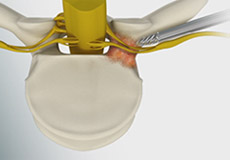
Foraminoplasty
Neural foramina are small canals at every level of the spine through which nerves leave the spinal cord and go to the limbs and other parts of the body. Narrowing of this canal is called foramina stenosis.
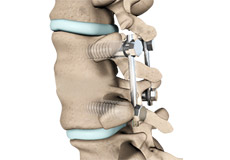
Lumbar Fusion
Spinal fusion, also called arthrodesis, is a surgical technique used to join two or more vertebrae (bones) within the spine. Lumbar fusion is the procedure of fusing the vertebrae in the lumbar portion of the spine (lower back).

Lumbar Decompression
The spinal cord is protected by a bony column of vertebral bones, arranged one above the other. Injury or wear-and-tear can cause parts of the vertebrae to compress the nerves of the spinal cord, leading to pain, numbness or tingling in the part of the body that the nerve supplies.
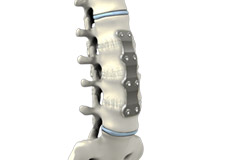
Lumbar Corpectomy and Fusion
Lumbar corpectomy and fusion is a surgical technique performed to remove the vertebral bone or disc material between the vertebrae to alleviate pressure on the spinal cord and spinal nerves (decompression) in the lumbar (lower back) region.
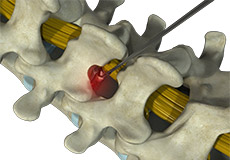
Microdiscectomy
The spine is made up of small bony segments called vertebrae. These vertebrae are categorized into cervical or neck vertebrae, thoracic or upper back vertebrae, lumbar or lower back vertebrae, and the sacrum within the pelvis.
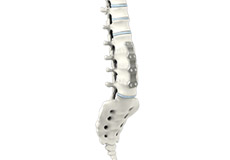
Anterior Lumbar Interbody Fusion
Anterior lumbar interbody fusion (ALIF) is a surgery performed to correct spinal problems in the lower back. The surgery can be implemented either as an open surgery or minimally invasive technique.
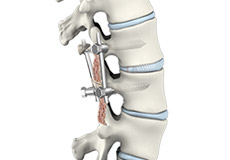
Spinal Fusion
Spinal fusion is the surgical technique of combining two or more vertebrae. A fusion of the vertebrae involves the insertion of secondary bone tissue obtained either from an autograft (tissues from your own body) or allograft (tissues from another person) to enhance the bone healing process.

Spinal Decompression
Spinal decompression is a treatment to relieve pressure on one or many “pinched nerves” in the spinal column. It can be achieved either surgically or by non-surgical methods. Spinal decompression is used to treat conditions that cause chronic backaches such as herniated disc, disc bulge, sciatica, and spinal stenosis.
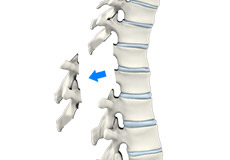
Laminectomy
Degeneration of the facet joints and intervertebral discs results in the narrowing of the spinal canal, known as spinal stenosis. In addition, the arthritic facet joints become bulkier and consume the space available for the nerve roots. Besides, bony outgrowths, also known as bone spurs or bone osteophytes can also narrow the spinal canal.
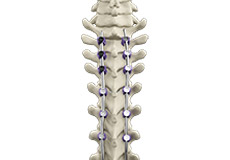
Scoliosis Surgery
Surgery for scoliosis is recommended when the spinal curvature is severe and is either worsening or is a cause of severe pain or difficulty in breathing. The surgery is aimed at rectifying the spinal curvature, stabilizing the spine and preventing it from worsening.
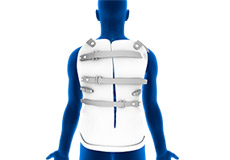
Scoliosis Treatment
Scoliosis is the abnormal curvature of the spine giving the spine an “S” or “C” shape. Scoliosis can occur at any age and is more common in girls than boys.

Minimally Invasive Spine Surgery
Minimally invasive spine surgery (MISS) is the latest technology available to perform spinal surgeries through small, less than one-inch-long incisions.
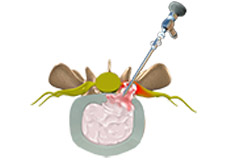
Lumbar Microdiscectomy
Microdiscectomy is a surgical procedure employed to relieve the pressure over the spinal cord and/or nerve roots, caused by a ruptured (herniated) intervertebral disc.
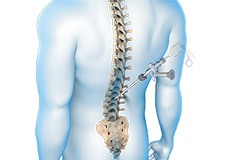
Endoscopic Spine Surgery
Endoscopic spine surgery is a minimally invasive spine surgery that uses specialized video cameras and instruments to remove the herniated disc through very small incisions.
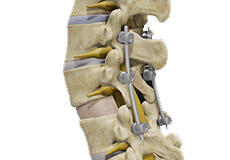
Spondylolisthesis Reduction & Fusion
Spondylolisthesis is a condition characterized by the displacement of one vertebra over the other. Excessive displacement may compress the surrounding spinal nerves and cause pain.
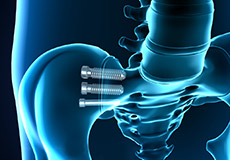
Sacroiliac Joint Arthrodesis
Sacroiliac (SI) joint arthrodesis is a surgical procedure employed for the treatment of sacroiliac joint dysfunction and/or inflammation/pain.

Complex Spinal Reconstruction
Complex spinal reconstruction is a major surgical procedure to correct spine deformities and associated symptoms such as pain, numbness, and instability in your back, shoulders, arms, or legs.
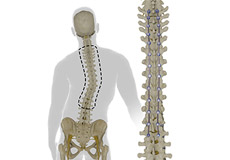
Surgery for Scoliosis
Surgery for scoliosis is recommended when the spinal curvature is severe and is either worsening or is a cause of severe pain or difficulty in breathing.
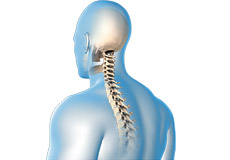
Complex Spine Surgery
Complex spine surgery is a procedure that involves six or more vertebrae of the spinal column, requiring six or more hours of surgery to correct a spinal deformity.
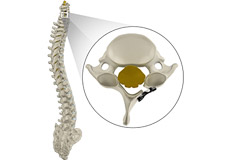
Disc Decompression
The spinal cord passes through the vertebral column, which forms a bony protective cover. Between the vertebral bones are soft discs that cushion the spine against stresses and allow the spine to be flexible.
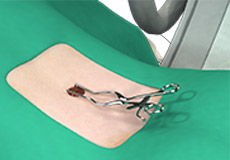
Outpatient Spine Surgery
Outpatient spine surgery is an operative procedure that does not require an overnight stay at the hospital. It is also called ambulatory or same-day surgery.
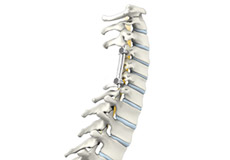
Cervical Spine Fusion
Your spine consists of a spinal cord supported by a series of interlocking bones called vertebrae. The cervical spine is the upper part of the spine situated in the neck region.
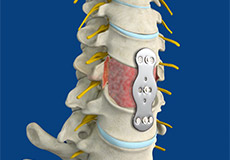
Anterior Cervical Corpectomy and Fusion
An anterior cervical corpectomy and fusion is an operative procedure to relieve pressure on the spinal cord and spinal nerves by removing the vertebral bone and intervertebral disc material (decompression) in the cervical spine or neck.
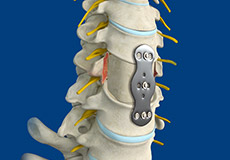
Anterior Lumbar Corpectomy and Fusion
Anterior Lumbar Corpectomy and Fusion is a surgical technique performed to remove the vertebral bone or disc material between the vertebrae to alleviate pressure on the spinal cord and spinal nerves (decompression) in the lumbar (lower back) region.
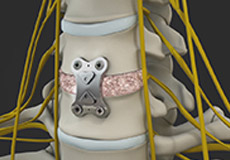
Anterior Cervical Discectomy with Fusion
The vertebrae of the backbone are cushioned by intervertebral discs that act as shock absorbers and allow frictionless movement of your back.
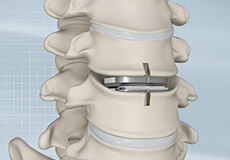
Artificial Cervical Disc Replacement
The cervical spine is located in the neck region and consists of seven bones arranged one on top of the other. Cushioning tissue called vertebral discs located between the vertebrae act as shock absorbers, allowing easy movement of the neck.
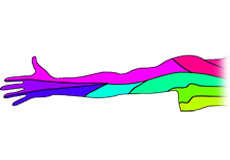
Arm Pain of Spinal Origin
Arm pain of spinal origin can be described as discomfort or pain felt anywhere in the arm including the wrist, elbow, or shoulder as a result of a pinched nerve (nerve compression) or irritated nerve in the spinal cord.
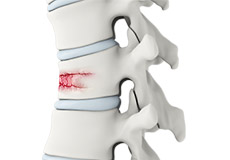
Spinal Fractures
Vertebral compression fractures occur when the normal vertebral body of the spine is squeezed or compressed. The bone collapses when too much pressure is placed on the vertebrae, resulting in pain, limited mobility, loss of height, and spinal deformities.
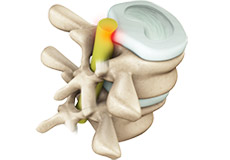
Lumbar Radiculopathy
The spine consists of 33 vertebral bones stacked one on top of the other with cushioning discs lying between each vertebra. The lumbar region of the spine (below the rib cage) consists of 5 vertebrae.
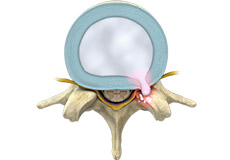
Lumbar Herniated Disc
A herniated disc is a condition in which the outer fibers (annulus) of the intervertebral disc are damaged, causing the soft inner material of the nucleus pulposus to rupture out of its space.
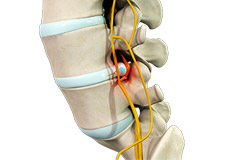
Lumbar Stenosis
Lumbar stenosis is the compression of spinal nerves caused by the narrowing of the spinal canal. It is one of the common causes of lower back pain. Spinal stenosis can also affect the spine in the neck region.
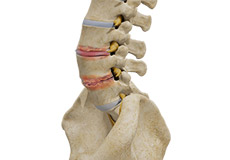
Lumbar Degenerative Disc Disease
The normal intervertebral disc is composed of a nucleus pulposus at the center, surrounded by a fibrous ring known as annulus fibrosus. The nucleus pulposus is a soft, well hydrated, jelly-like substance that acts as a shock absorber.
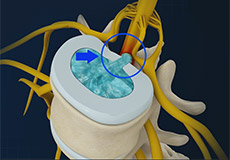
Disc Herniation
Disc herniation is one of the common causes of back pain. The intervertebral discs are flat and round, present between the vertebrae and act as shock absorbers when you walk or run.
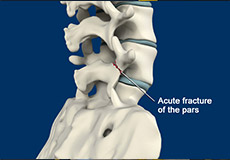
Spondylolysis
Spondylolysis is a stress fracture in the vertebra that may progress into spondylolisthesis, a condition where the vertebra gets displaced from the spinal column.
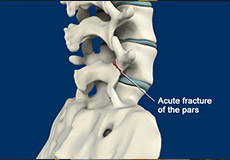
Vertebral Compression Fractures
Back pain is an indication of stress fractures known as vertebral compression fractures. Vertebral compression fractures occur when the normal vertebral body of the spine is squeezed or compressed.

Back Pain
Back pain or backache is the pain felt in the back that may originate from damage to the muscles, nerves, bones, joints or other structures in the spine.

Spondylolisthesis
Spondylolisthesis is the displacement of the vertebral disc from the spinal column. Outward (forward) displacement is termed as anterolisthesis and inward (backward) displacement is termed as retrolisthesis.

Facet Joint Arthritis
Facet joints, also called zygapophyseal joints, are synovial joints located at the back of your spine, connecting the vertebrae together.

Sciatica
The sciatic nerve is the longest nerve in your body. It begins in the lower back and extends through the buttocks down the back of each leg to the thighs and feet.
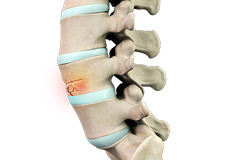
Fractures of the Spine
A fracture of the spine is a break in the bone continuity of the spinal vertebrae or vertebral column. The spine extends from the neck to the lower back and consists of the vertebral bones which surround and protect the spinal cord.

Scoliosis
Scoliosis is a condition characterized by the abnormal curvature of the spine that causes a deviation to one side. It causes a physical deformity, making the spine look like the letter “C” or “S” instead of the letter “I”.
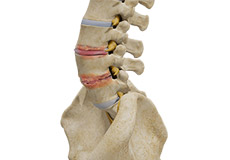
Degenerative Disc Disease
The intervertebral disc is composed of a ring called the annulus fibrosis that encloses a gelatinous inner structure called the nucleus pulposus.
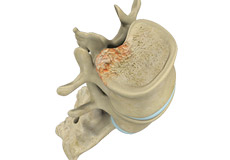
Spinal Tumors
A spine tumor is the abnormal growth of uncontrolled tissues or cells in and around the spinal cord. Tumors can either be cancerous (malignant) or non-cancerous (benign).
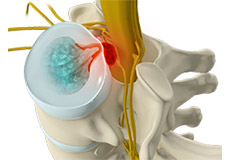
Cauda Equina Syndrome
What Cauda equina syndrome is an emergency condition characterized by persistent severe lower back pain caused by the compression of a bundle of spinal nerves (cauda equina) at the end of the spinal cord (lower back and hip region).

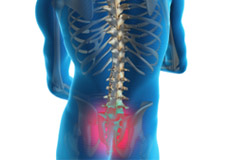
Sacroiliac Joint Dysfunction
The sacrum is the triangular-shaped bone at the bottom of the spine, below the lumbar spine. The sacroiliac joint is a large joint in the body, formed by the connection of the sacrum and the right and left iliac (pelvic) bones.

Ankylosing Spondylitis
Sacroiliac joints are present in the lower back where the sacrum part of the vertebrae joins the iliac bones. The term ankylosis stands for loss of mobility of the spine, whereas spondylitis means inflammation of the spine.
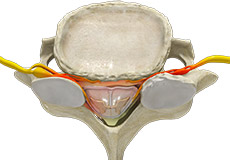
Cervical Stenosis
Cervical stenosis refers to the narrowing of the spinal canal that protects the spinal cord and its branching nerves.

Spinal Stenosis
Spinal stenosis is a condition caused by the vertebral column constricting and exerting pressure on the spinal cord or neural foramen (a bony tunnel through which a nerve exits the spinal cord).

Low Back Pain
Low back pain is often a common symptom of many disease conditions and the back pain may range from simple or dull pain to sudden and sharp pain. If the pain persists for a few days, it is acute pain whereas if it continues for more than 3 months, it is considered chronic pain.
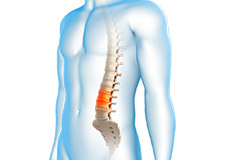
Degenerative Spinal Conditions
A degenerative condition is a continuous deterioration of a tissue or an organ in your body over time.
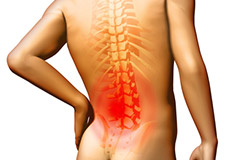
Preventing Back Pain at Home and Work
The back is subject to wear and tear from daily activities and stresses. Pain may vary in severity and duration. Although the natural degenerative processes that take place with aging cannot be avoided, precautions can be taken at home and your workplace to minimize its impact.
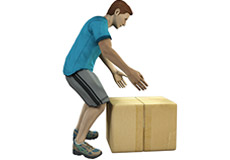
Proper Lifting
Lifting heavy weights and improper lifting of weights is one of the foremost causes of neck pain or lower back pain. Practicing proper lifting techniques is essential to avoid strain on your neck and back.
